Intel Developer Forum 2012 - Justin Rattner Keynote Live Blog
by Anand Lal Shimpi on September 13, 2012 11:51 AM EST- Posted in
- IT Computing
- CPUs
- Intel
- Trade Shows
- IDF 2012
10:25AM PDT - Wrap up! We're done! On to the next one...
10:24AM PDT - Intel wants to support up to 100 base stations in a single server under light load
10:23AM PDT - Sidenote: I've been late for nearly every meeting at IDF this year, everything seems to run over - Justin has 8 minutes to wrap up before I'm late for another one!
10:23AM PDT - Consolidate multiple base station workloads in a smaller number of servers
10:22AM PDT - Can also work in the opposite direction, conserve energy when the traffic load is low
10:22AM PDT - This lets you continually balance base station load
10:21AM PDT - One of the base stations can be offloaded to another server, load balancing
10:21AM PDT - We see this scenario every morning, more and more users come online as they wake up
10:21AM PDT - As you add more mobile devices into the network, the load on the server goes up
10:21AM PDT - At first one server is running and processing two base station workloads
10:20AM PDT - Emulated mobile devices connected to the base station playing streaming video
10:20AM PDT - Two Core i7 servers running the basestation workload
10:20AM PDT - Load can be shared among different servers depending on the load of each cell site
10:20AM PDT - Today multiple base stations running on servers
10:20AM PDT - Last year we demoed a single LTE base station running on a server
10:19AM PDT - C-RAN demo
10:18AM PDT - All of this leads China Mobile to a Cloud Radio Access Network (C-RAN)
10:18AM PDT - Interference between base stations is becoming an issue as well
10:17AM PDT - Power consumption last year was 13B kWh
10:16AM PDT - 200K by the end of next year
10:16AM PDT - China Mobile plans on deploying 20K LTE base stations by the end of this year
10:15AM PDT - China Mobile has over 900,000 3G base stations
10:14AM PDT - Can replace hardware at cell sites with standard server hardware running in a datacenter
10:14AM PDT - Last year Intel demonstrated a complete LTE base station stack with a Sandy Bridge PC
10:13AM PDT - Could potentially help operators deploy additional capacity and properly balance existing load
10:12AM PDT - Or much of the processing
10:12AM PDT - Move all processing to the cloud
10:12AM PDT - Put LTE basestation stack in an Intel server somewhere
10:12AM PDT - Deploy software defined radios in the cloud rather than hardware in each station
10:11AM PDT - Is there an opportunity to rethink the fundamentals of the radio access network?
10:10AM PDT - Last thing: building the next gen wireless infrastructure
10:09AM PDT - Using a palm detect sensor
10:09AM PDT - Instead of a standard fingerpint sensor you just hover your hand over the sensor
10:08AM PDT - Use the accelerometer in the tablet to immediately lock the tablet as soon as you put it down
10:06AM PDT - Wave hand in front of the device and it's unlocked
10:06AM PDT - Tablet with a biometric sensor
10:06AM PDT - Demo time
10:05AM PDT - Replace what you know with what you are
10:04AM PDT - Is there a way around this? Biometrics is one option
10:04AM PDT - Talking about users typically reuse passwords or make simple ones, sacrifice security for ease of use
10:03AM PDT - Director of Security Research at Intel Labs is on stage now
10:03AM PDT - Now talking about security
10:01AM PDT - Now we look at type of content and devices and adjust bandwidth allocation accordingly
10:00AM PDT - About half of the users won't be happy with that quality of experience
10:00AM PDT - Traditionally you'd give everyone a 1Mbps link
10:00AM PDT - Demo time, 10 devices, 4 tablets and 6 phones, streaming video over a constrained 10Mbps pipe
09:58AM PDT - Networks that understand when video is being transmitted and apply QoE to those streams
09:58AM PDT - Video Aware Wireless Networks (VAWN)
09:57AM PDT - Chris Neisinger, Exec Director Network Planning from Verizon Wireless
09:55AM PDT - Now onto video streaming
09:55AM PDT - Not too much additional detail unfortunately
09:54AM PDT - Save about half of the CPU power during active downloading
09:53AM PDT - That's what happens when idle, now what about when active?
09:53AM PDT - and removes unnecessary packets or defers others for later work
09:53AM PDT - Spring Meadow analyzes packets coming into the NIC while the Ultrabook is idle/asleep
09:52AM PDT - Today's Ultrabook, whenever a packet comes in the CPU wakes up
09:51AM PDT - New technology, codenamed Spring Meadow
09:51AM PDT - Web traffic tends to be erratic, leads to all kinds of inefficiencies
09:50AM PDT - How are we going beyond smart connect?
09:50AM PDT - Charlie Tai, Principal Engineer at Intel Labs just joined Justin on stage
09:50AM PDT - Now talking about improving over what we have today
09:49AM PDT - (S0ix baby!)
09:49AM PDT - Basically allowing updates to things like email, twitter, etc... while your machine is asleep
09:49AM PDT - Talking about Intel's Smart Connect technology
09:47AM PDT - Wireless charging discussions perhaps?
09:47AM PDT - Ok now moving onto convenience and battery life
09:47AM PDT - This is cool, it's sort of like wireless Thunderbolt
09:46AM PDT - Video is being streamed wirelessly from the hard drive through the Ultrabook, sent wirelessly to the display
09:46AM PDT - External WiGig hard drive, turned on, system automatically detects it
09:45AM PDT - Ooh the demo is working!
09:45AM PDT - WiGig certification program will launch in mid 2013
09:45AM PDT - WiGig docking would allow that
09:44AM PDT - You could shrink the size of the Ultrabook if you removed all external connectors
09:43AM PDT - The device would normally connect to the WiGig docking station and drive all the peripherals wirelessly
09:43AM PDT - Demo not working yet
09:42AM PDT - Two monitors connected to the WiGig docking station, 1080p displays, external HDD, printer, all connected
09:42AM PDT - Wireless docking with WiGig
09:41AM PDT - Does everything WiFi can do today plus additional applications
09:41AM PDT - We need to move into frequency band where there's a lot less interference, why we moved into 60GHz
09:40AM PDT - Why WiGig instead of other 60GHz wireless options?
09:40AM PDT - 60GHz spectrum, mm waves
09:39AM PDT - Very high throughput wireless technology to do things beyond what WiFi can do, transmit to monitors, move PCIe, USB, etc... away from cables
09:39AM PDT - Where are we with the development of the WiGig standard?
09:38AM PDT - President of the WiGig Alliance is on stage
09:37AM PDT - Showing how using WiGig your tablet becomes your desktop...wirelessly
09:37AM PDT - A WiGig demo video now
09:36AM PDT - This is huge as it is a necessary part of Intel integrating more into its mobile SoCs
09:36AM PDT - But some more can be moved into digital
09:35AM PDT - There are still some analog components, power amps, some things will always be analog
09:35AM PDT - Codename Rosepoint
09:35AM PDT - They did it
09:34AM PDT - Two Atom cores and integrated Moore's Law Radio in 32nm
09:34AM PDT - Pat didn't just ask for a digital radio, he asked for a digital radio you could integrate on a chip with other blocks, compute, registers, IO, etc...
09:33AM PDT - Hooray it stopped
09:33AM PDT - Proving it works by Justin Rattner blocking one of the antennas
09:33AM PDT - It works!
09:33AM PDT - Demo sending video over the 802.11g link
09:32AM PDT - Running 802.11g
09:31AM PDT - Waited 10 years for this can we see the radio?
09:31AM PDT - Power efficiency is on par with the best analog designs already
09:31AM PDT - Built on Intel 32nm process
09:31AM PDT - First complete WiFi digital radio, with full 40MHz wifi bandwidth
09:31AM PDT - Moore's Law Radio
09:30AM PDT - Now we have all the blocks, can we build the radio
09:30AM PDT - "required some definite mathematic manipulations"
09:30AM PDT - "this sounds like it's going to require some new mathematics not found in the textbooks"
09:30AM PDT - Intel is in the business of making things smaller, no different for the digital radio efforts
09:29AM PDT - Digital phase modulator, one of the last blocks to come together, once again had to prove functionality and that it would scale with process nodes
09:29AM PDT - Scaling will continue going to 14nm as well
09:29AM PDT - Had a feeling the DFS would scale, but proved it with 90nm to 32nm scaling
09:28AM PDT - Digital synthesizer was the first important block that Intel moved into digital
09:27AM PDT - That was the only integrated frequency synthesizer that could do WiFi and 4G specs
09:27AM PDT - Digital frequency synthesizer
09:27AM PDT - Now hearing the story of how this happened
09:27AM PDT - A 10 year quest from when Pat issued the challenge until now
09:26AM PDT - Went back to the books, focused on building the computer that could do the math to model analog components
09:26AM PDT - Not just convert analog blocks to digital blocks, had to invent new things in many cases that would work well
09:25AM PDT - The baseband is already digital, talking about the components outside of it
09:25AM PDT - Analog receiver/transmitter takes a lot of tweaking to get right, mostly analog blocks as you can see in the image below
09:24AM PDT - Going to move very fast through a lot of very technical stuff
09:24AM PDT - Yorgos Palaskas
09:24AM PDT - Research leader at the radio integration lab is on the stage now
09:23AM PDT - Poor form Justin.
09:22AM PDT - "Obviously not doing digital radios"
09:22AM PDT - "Pat is now running a software company"
09:22AM PDT - Not cool.
09:22AM PDT - Wow, Rattner just sort of made fun of Pat Gelsinger?
09:22AM PDT - (sorry I think Justin meant to say 100s of microns, not 100nm)
09:21AM PDT - Hence the desire to move to all digital RF
09:21AM PDT - The analog portion, as a result, tends to be larger than the digital portion as you exploit Moore's Law
09:21AM PDT - Analog components are better around 100nm than 10nm where we'll be in the middle of the decade or slightly later
09:20AM PDT - The trouble with analog is that it doesn't scale with the technology, it gets worse as the transistors get smaller
09:20AM PDT - (talking about the RF section of the radio)
09:20AM PDT - Talking about how radios are still mostly analog technology
09:19AM PDT - For those of you who don't remember, Pat promised that all Intel silicon would ship with integrated radios that would be totally software definable and could work across frequencies, networks, etc...
09:19AM PDT - Thus begun our quest to do the impossible, that was 2002, it has taken us 10 years but we think we did it
09:19AM PDT - ...was really too powerful for us to ignore
09:18AM PDT - Technical challenge that Pat gave us, to fulfill this dream of radios anywhere and everywhere
09:18AM PDT - Pat Gelsinger promised radio free Intel
09:17AM PDT - Gelsinger on video, talking about every chip shipping with an integrated radio
09:17AM PDT - Playing a video clip of IDF from 10 years ago
09:17AM PDT - Our quest in wireless began right here on this stage 10 years ago
09:16AM PDT - Intel exec showed up 10 years ago, talked about a technology that Intel wasn't ready to do
09:15AM PDT - That's the second time I've heard that this week, wireless will become the primary form of connectivity for almost everything
09:15AM PDT - From the simplest embedded sensor with a tiny processor to the most sophisticated high end supercomputer, nearly all of them will connect one way or another wirelessly
09:15AM PDT - Not just connected, but always connected (S0ix baby!)
09:14AM PDT - Makes sense, we know that
09:14AM PDT - Mobile computing revolution, in the future everything that computes will connect
09:14AM PDT - "I wasn't going to give a keynote where I just predicted or forecasted some technology"
09:13AM PDT - "have been thinking about it for at least the last three years"
09:13AM PDT - "that's so true for today's keynote"
09:13AM PDT - The topics of the keynote "tend to choose me"
09:12AM PDT - Rattner expressing his personal appreciation for everyone who showed up today, the day 3 keynote is usually awesome, everyone should show up
09:11AM PDT - Ok ears are off, now let's get to something good
09:11AM PDT - Rattner is talking about his ears
09:10AM PDT - ...wearing wolf ears?
09:10AM PDT - Here we go, Intel's CTO and Managing Director of Intel Labs, Justin Rattner just took the stage
09:08AM PDT - I promise this keynote is usually awesome
09:08AM PDT - It's a video of a bunch of kids singing about how they use their tablets, notebooks and smartphones at camp...
09:07AM PDT - Here we go, starting with an intro video
09:03AM PDT - The keynote is going to begin in ~2 minutes
08:57AM PDT - We are seated and waiting for things to get started. Attendance to the last keynote is always lighter than usual, but the content is usually pretty good.



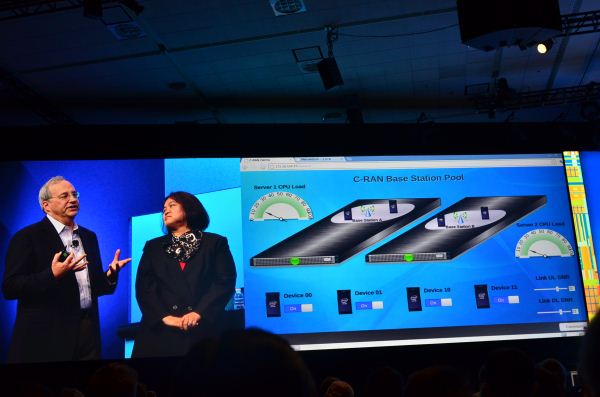
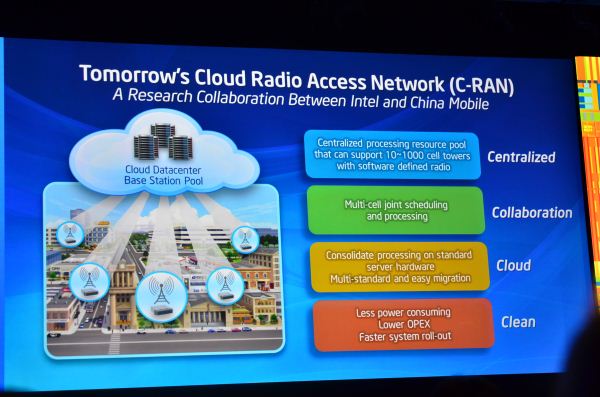

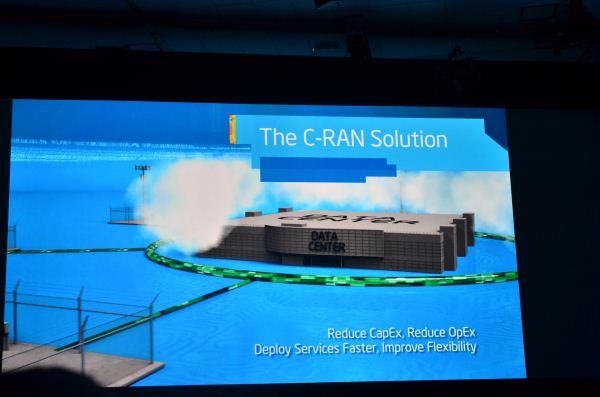
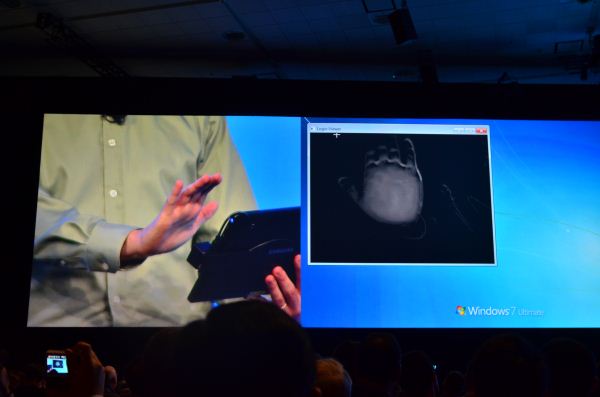
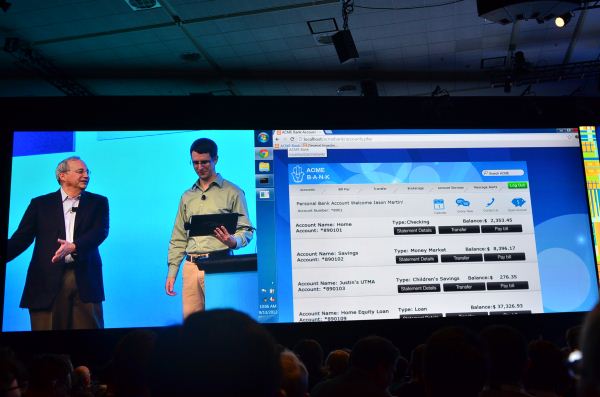
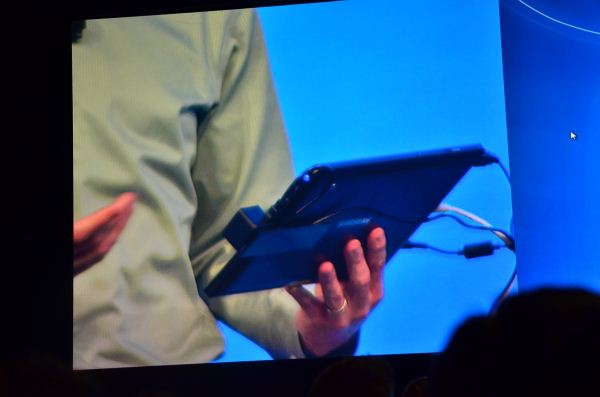
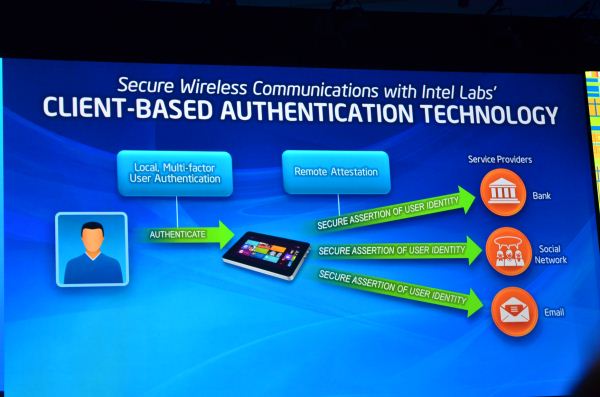
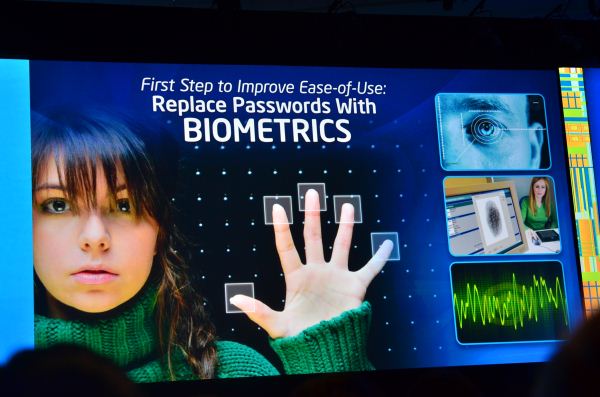
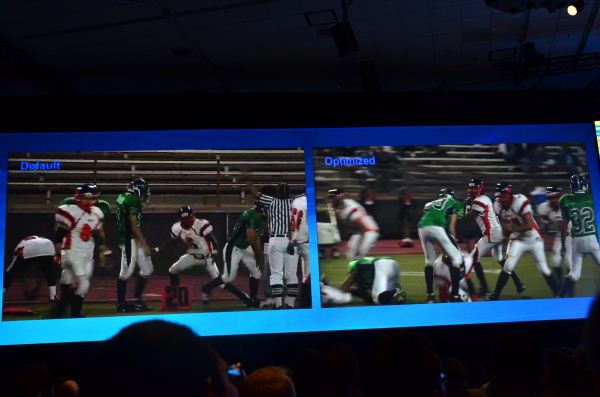
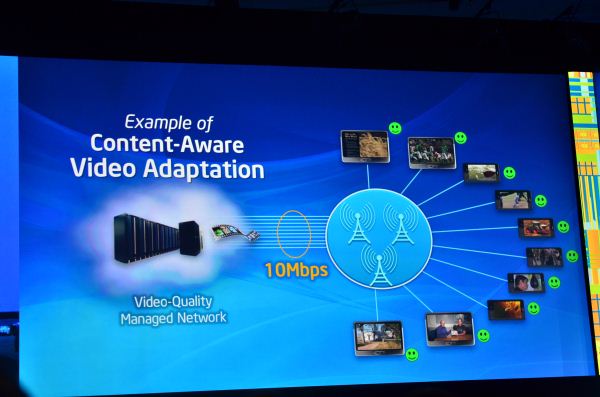
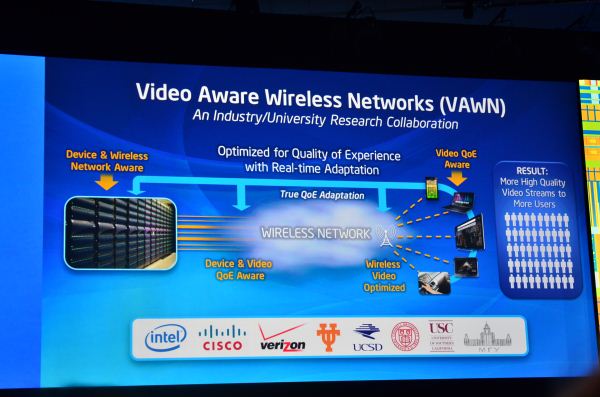

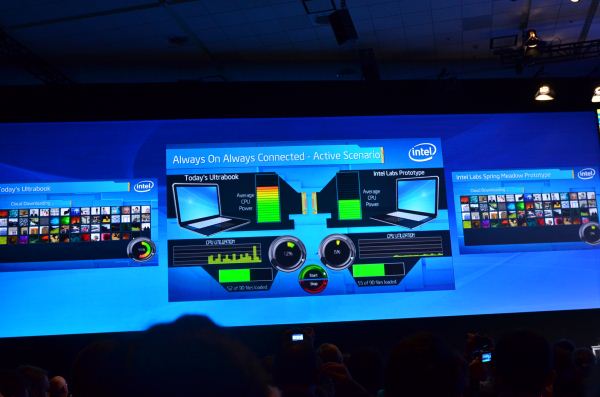
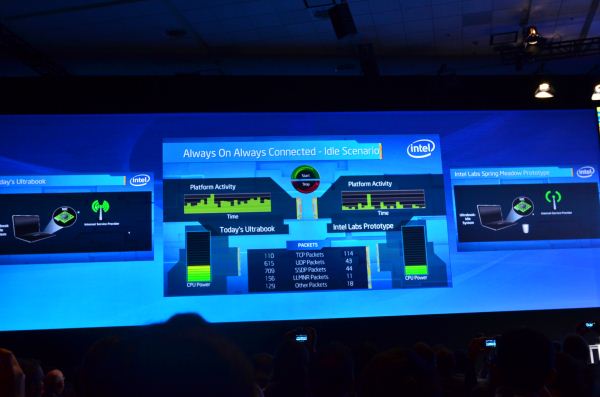


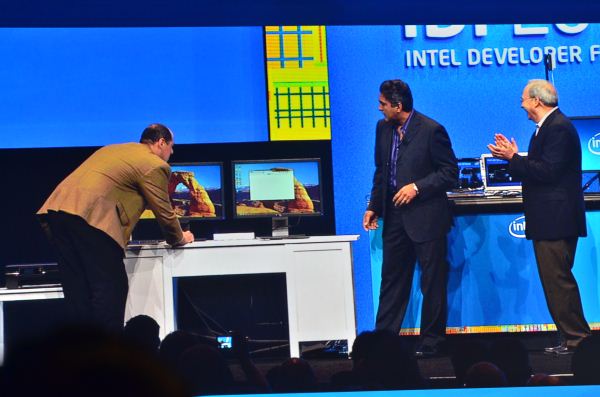

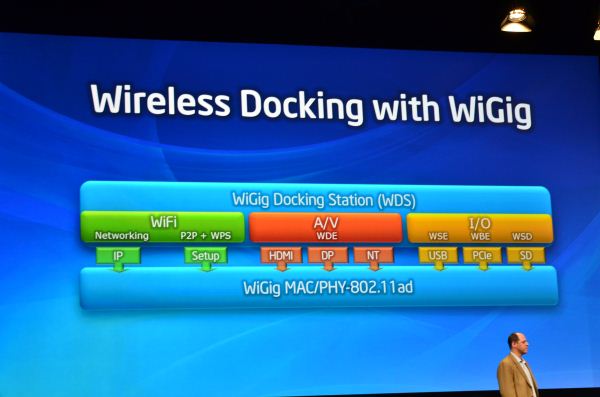
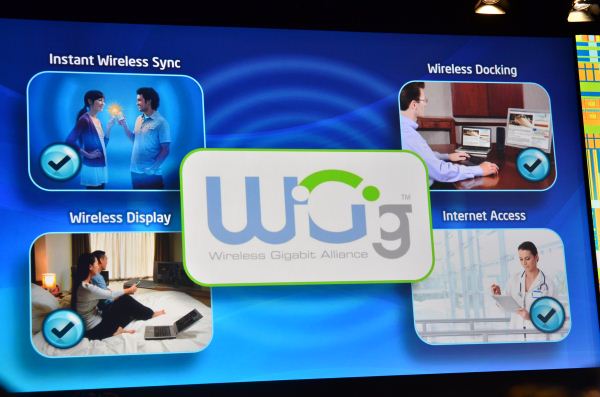
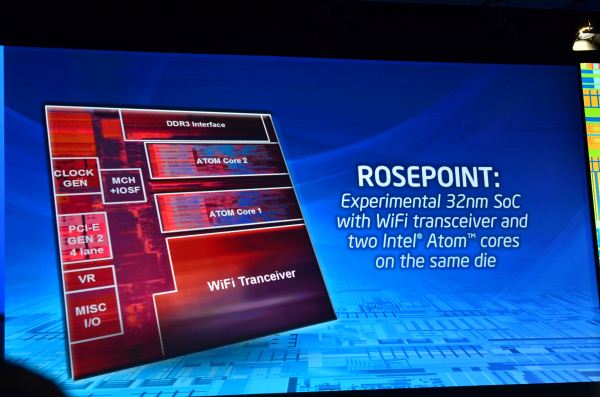
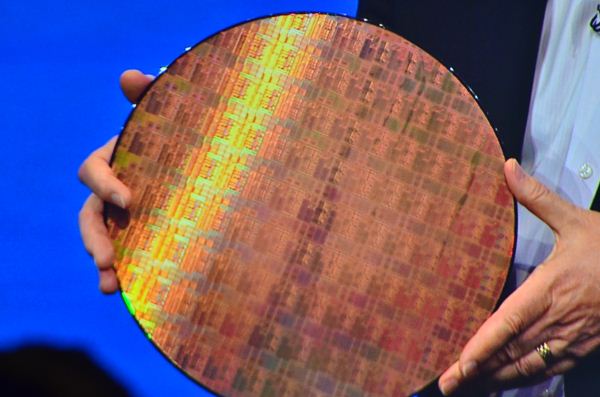
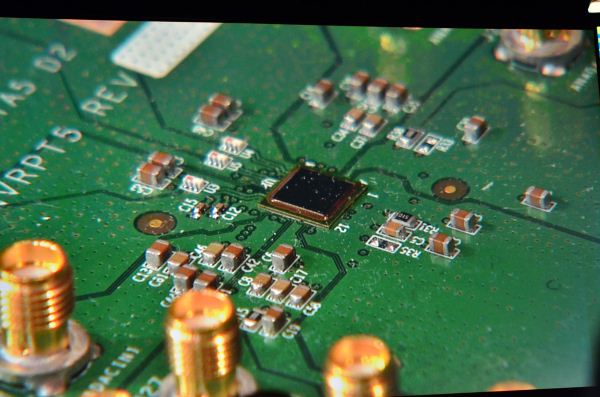
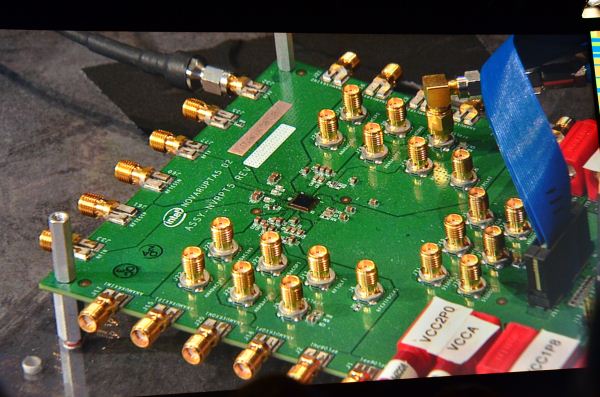
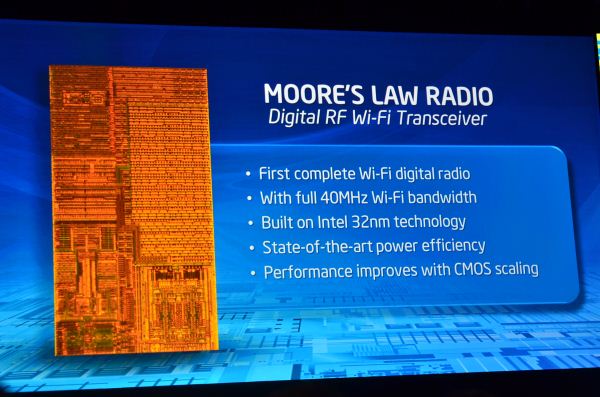
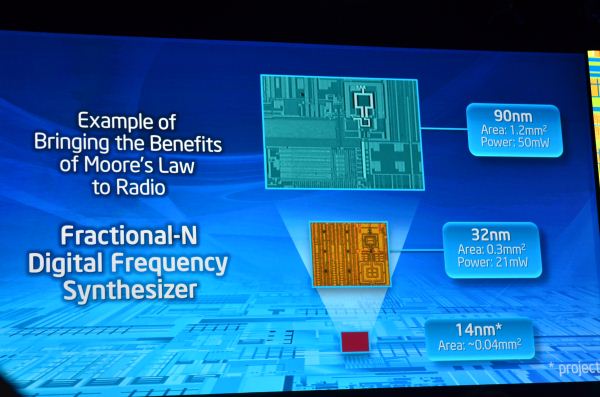
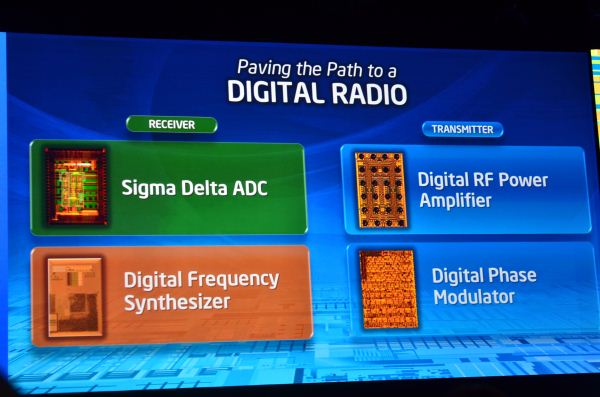
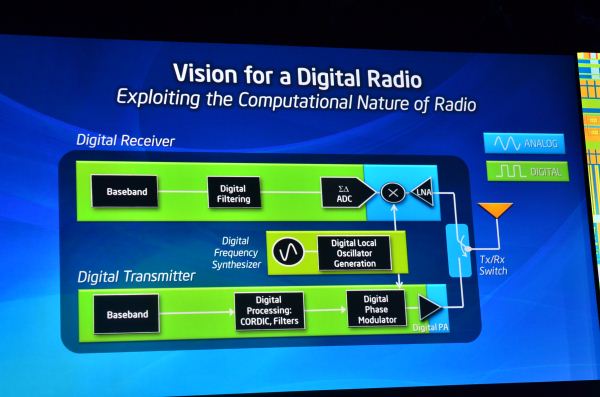
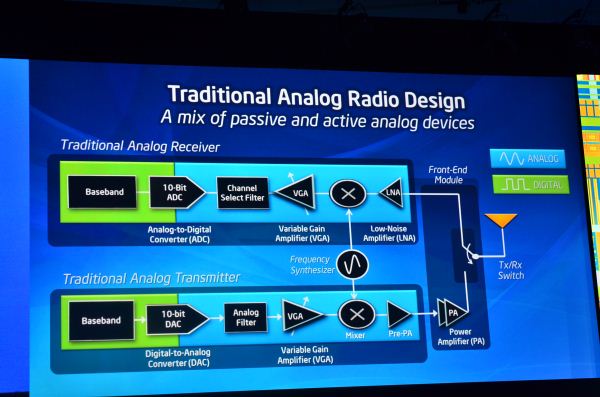
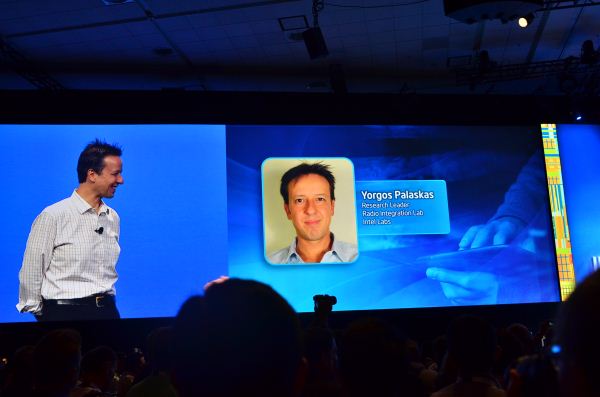
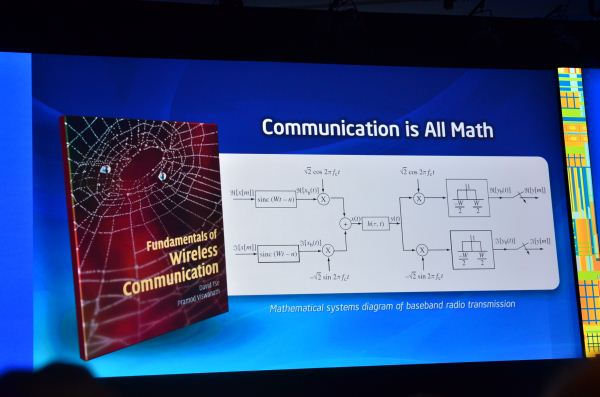
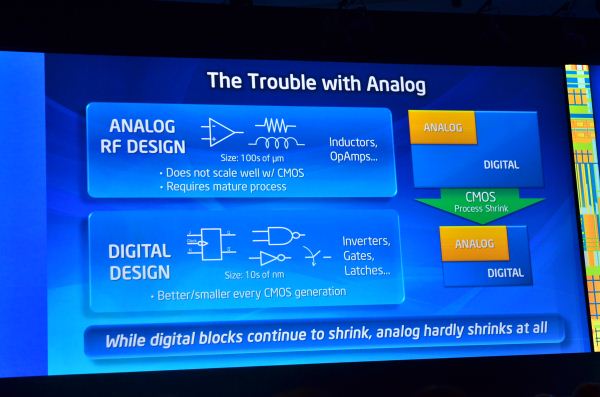
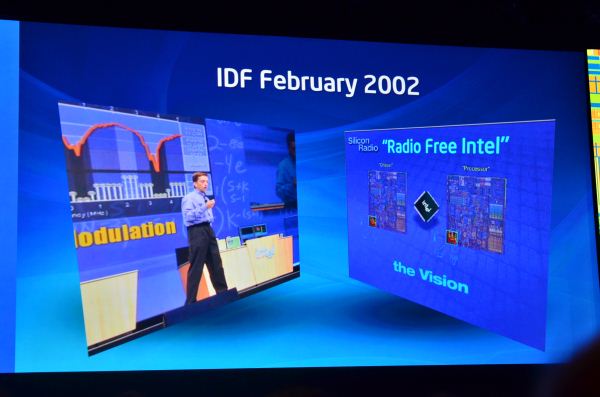
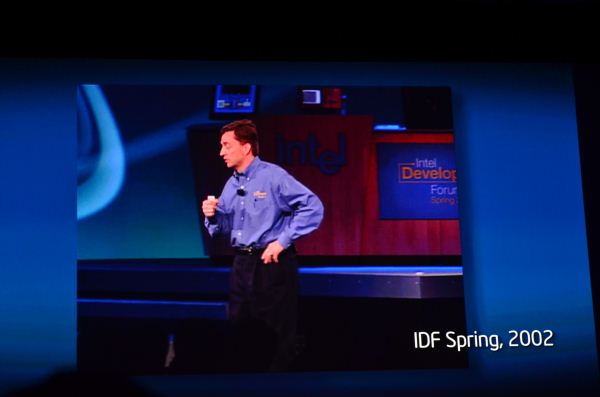
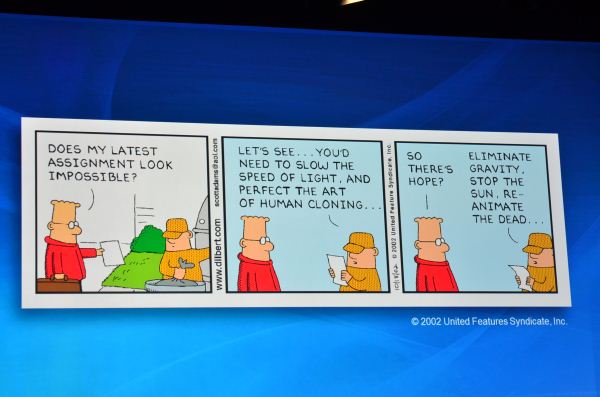
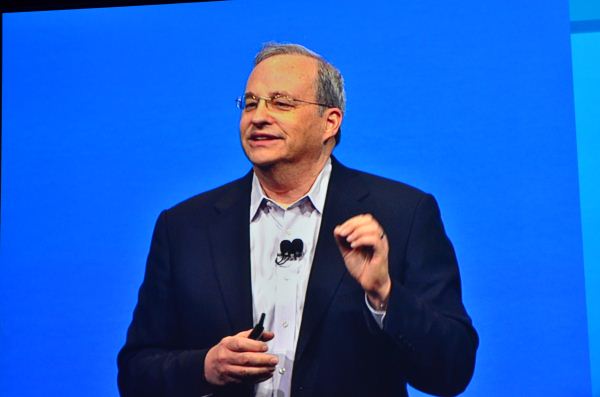
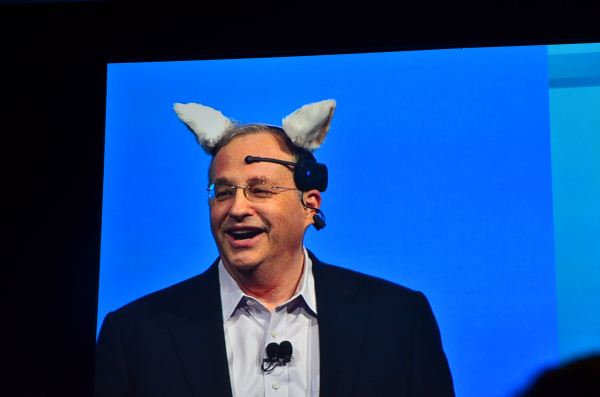
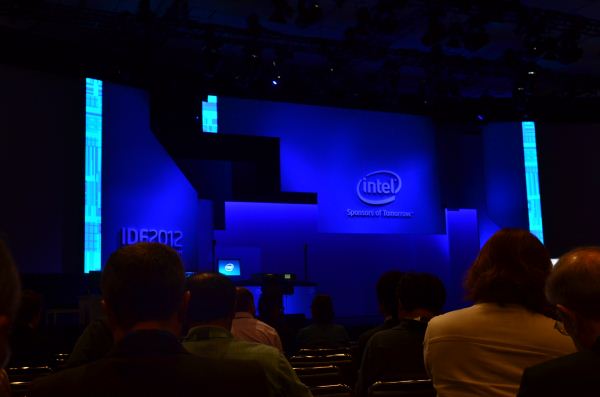








14 Comments
View All Comments
CajunArson - Thursday, September 13, 2012 - link
The comments about Gelsinger are interesting. I was at Carnegie Mellon in 2003 and he came to visit campus and gave a talk on his vision for embedding radios in a huge range of chips. It's pretty neat to see this finally coming into real products even if it took a long time to get there. I think the moral of the story is, if you don't think out ahead 10+ years, then 10+ years later you won't have all the cool stuff.ssj4Gogeta - Thursday, September 13, 2012 - link
Do they have a way to notify you if you get an email while your notebook is asleep? Otherwise what's the use of Smart Connect updating your email when you can't be notified? It could just sync as soon as you wake it up.Arnulf - Thursday, September 13, 2012 - link
With the move to ever shorter wavelengths the EM radiation gets more and more invasive. Are these 60 GHz things really safe ? I'm a techmology enthusiast, I use a cell phone, WiFi etc. but I'd be really hesitant to keep microwave band equipment permanently running in my own room, perhaps as close as the nightstand (a place where people might put down their tablet/notebook before going to bed) ...A5 - Thursday, September 13, 2012 - link
At the power levels WiGig is talking about, the waves won't be able to penetrate human skin (or likely even clothing). Given the limitations of the 60 GHz spectrum (LOS only, strongly attenuated in the atmosphere), it's not really a health concern.ssj4Gogeta - Friday, September 14, 2012 - link
"With the move to ever shorter wavelengths the EM radiation gets more and more invasive"Well the visible light is as short as 1/12,500 times the 60GHz wavelength.
Arnulf - Friday, September 14, 2012 - link
Indeed, and it can burn my skin and cause cancer.X-rays are shorter still and gamma rays even shorter than X-rays ... your point being ?
geddarkstorm - Friday, September 14, 2012 - link
Err, visible light does not burn your skin and cause cancer. The shorter and non visible ultraviolate (UV) wave lengths do that; not visible light.60 Gigahertz is completely safe (it's a 5 mm wavelength, water interacts with wavelength bands at 13.48 or 1.64 mm, so it's outside the strongest water absorption points; and of course microwave ovens are at the 2-3 gigahertz range, or 12 cm wavelengths, where water really interacts even more strongly, and we use that in phones and such with no problems; so this 5 mm wavelength is in a nice safe zone), and we aren't talking about pumping in kilo- or megawatts of energy into the waves either.
Even terahertz has not been shown to cause problems biologically. Then of course visible light is much higher frequency (shorter wavelength) than that. Only once you get to ultraviolate do you start doing potential biological damage.
ssj4Gogeta - Monday, September 17, 2012 - link
My point is that just because it's shorter doesn't mean it's going to do more damage. How much damage it's going to do depends on the properties of the target and obviously on how much energy is being put out. With enough intensity any wavelength light will do damage (eg. magnifying glass focusing sunlight). Microwave ovens operate in the same frequency range as WiFi and Bluetooth. The latter are considered safe as they have much lower power output.aicom - Thursday, September 13, 2012 - link
This is the reason that I love Intel. They've got so much money, but they spend it on R&D which makes the world better off (instead of hoarding it like some company that shall remain nameless).stm1185 - Thursday, September 13, 2012 - link
You take your Smart Phone, you set it down on your desk, it connects with the Monitor, oh wait that monitor has a powerful GPU in it!, it connects with an external HDD, game loads off the external HD, through the phones SOC and then the Monitors GPU. And while it's by the monitor it's also wirelessly charging it's battery.Then in public places, touch based displays with charging integrated into tables, sit down, take out the phone, tap a connect button, but it pack in your pocket, surf and work off a 20inch screen while eating your lunch and charging your phone.